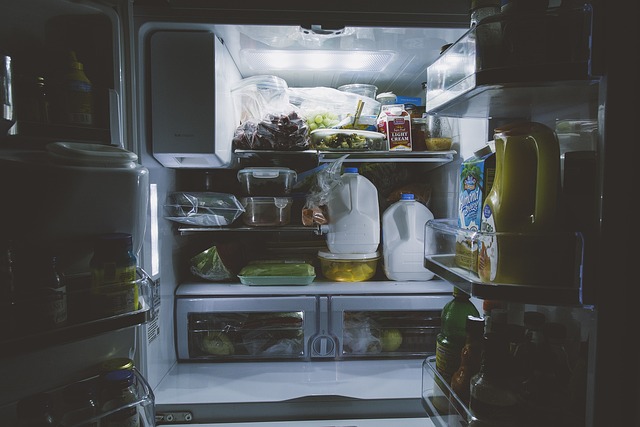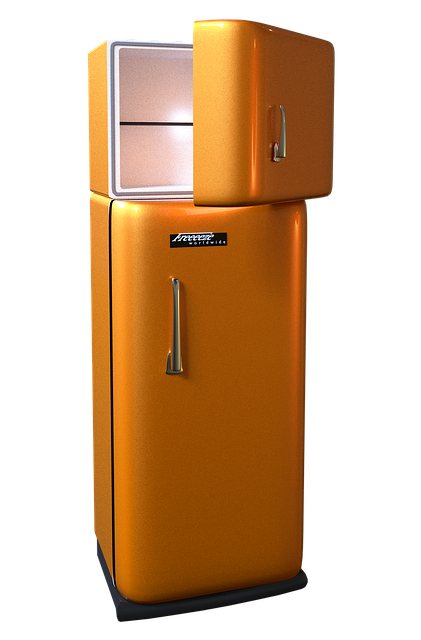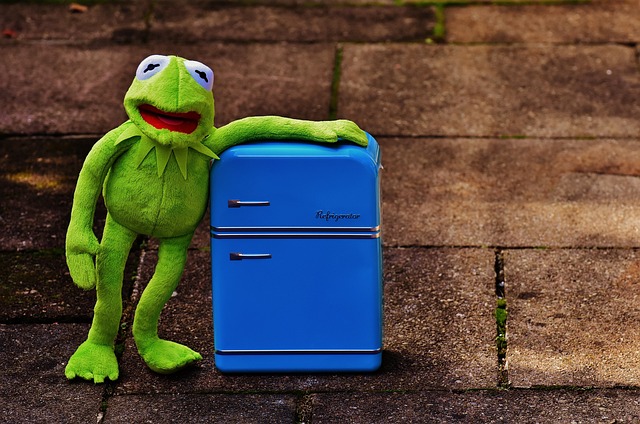When your refrigerator stops performing optimally, pinpointing the exact issue can restore both its efficiency and your peace of mind. This article delves into the critical realm of refrigerator repair, emphasizing a comprehensive diagnostic approach to address common malfunctions. From temperature control woes to electrical hiccups, and mechanical breakdowns, we guide you through each step to ensure your appliance operates at peak performance. Master the art of troubleshooting with our detailed strategies, and transform any fridge fix into a straightforward task.
- Understanding the Importance of Comprehensive Diagnostics in Refrigerator Repair
- Step-by-Step Troubleshooting Guide for Common Refrigerator Issues
- Identifying and Resolving Temperature Control Problems in Your Refrigerator
- Electrical Malfunctions: How to Safely Diagnose and Fix Your Fridge's Power Problems
- Troubleshooting Mechanical Failures: A Detailed Approach to Repairing Your Refrigerator's Moving Parts
Understanding the Importance of Comprehensive Diagnostics in Refrigerator Repair

When a refrigerator malfunctions, the integrity of perishable goods and the safety of stored food can be compromised, emphasizing the necessity for timely and thorough refrigerator repair. Comprehensive diagnostics play a pivotal role in identifying the root cause of any issue, ensuring that repairs are not merely temporary fixes but address the underlying problem effectively. By employing advanced diagnostic tools and techniques, technicians can pinpoint the exact malfunction, whether it’s a faulty thermostat, a condenser problem, or a door seal failure. This precision in diagnosis allows for targeted solutions that prevent recurring issues and extend the appliance’s lifespan. Homeowners benefit from this expertise by enjoying a reliable refrigerator that maintains optimal temperatures, preserving their groceries and saving them from costly and frequent repair visits. Understanding the intricate workings of a refrigerator and applying systematic diagnostic processes is essential for providing high-quality repair services that ensure food safety and customer satisfaction.
Step-by-Step Troubleshooting Guide for Common Refrigerator Issues

When your refrigerator isn’t performing as expected, a step-by-step troubleshooting guide can save you from an impending food crisis. Begin with a visual inspection of the exterior for any obvious signs of damage or disconnection. Ensure that the doors seal properly by performing a simple test: try to insert a piece of paper between the door and the frame; if it slides in easily, the seal may need adjustment or replacement. If the refrigerator isn’t cooling, check the thermostat settings first. Adjust the temperature control to the correct setting, typically between 35°F and 38°F for optimal performance.
Should the interior light shine brightly but the fridge remains warm, investigate the condenser coils. Clear any dust or debris from around these coils, as their efficiency can significantly impact your refrigerator’s cooling ability. If the unit is not running at all, verify that it’s plugged in and that the circuit breaker hasn’t tripped. For models with an ice maker, a buildup of frost could be hindering its operation; defrost the appliance if necessary by unplugging it and allowing it to thaw. If these steps don’t resolve the issue, or if you’re uncomfortable performing these checks, professional refrigerator repair services are available to ensure your appliance is functioning correctly and safely. Always refer to the user manual for specific troubleshooting instructions tailored to your refrigerator model. Regular maintenance and early diagnosis can prevent minor issues from escalating into costly refrigerator repairs.
Identifying and Resolving Temperature Control Problems in Your Refrigerator

When your refrigerator is not maintaining the correct temperature, it can compromise the freshness and safety of your food. Identifying temperature control problems often involves a systematic approach to troubleshooting. A faulty thermostat or a malfunctioning temperature control board could be the root cause. To resolve such issues, homeowners typically seek professional refrigerator repair services to accurately diagnose and fix the problem. However, for those comfortable with basic diagnostic tasks, checking the unit’s settings is the first step. Ensure that the temperature is set properly and that the door seals are tight to prevent warm air from entering. If the issue persists, inspecting the thermistor or thermostat can be next. These components regulate the compressor’s operation based on the internal temperature. If they are malfunctioning, replacing them is often the solution. For DIY enthusiasts, consulting the user manual for specific model instructions can be invaluable. Alternatively, for those who prefer professional refrigerator repair assistance, a certified technician can provide the necessary expertise to address and rectify these common issues efficiently. Regular maintenance, including cleaning the condenser coils and ensuring proper airflow, can also prevent future temperature control problems.
Electrical Malfunctions: How to Safely Diagnose and Fix Your Fridge's Power Problems

When confronted with electrical malfunctions in your refrigerator, a systematic approach to diagnosis and repair is crucial. To begin, check the power source to ensure that the fridge is properly plugged in and that there is electricity flowing to the outlet. If the fridge is unplugged or the outlet is dead, resolve this issue before proceeding. Next, inspect the refrigerator’s electrical connections for any signs of wear or damage. Loose wires or frayed cords can be a significant risk and should be addressed immediately by a qualified technician specializing in refrigerator repair.
Once the power supply is confirmed to be intact, investigate the fridge’s internal components. A common issue is a tripped circuit breaker or a blown fuse, which can disrupt the appliance’s operation. Resetting the breaker or replacing the fuse can often resolve the problem without the need for extensive repairs. If the breaker trips again, there may be an ongoing electrical draw from the fridge that could signal a deeper issue such as a malfunctioning thermostat, damaged heating coil, or worn-out compressor. In such cases, it’s advisable to consult with or hire a professional refrigerator repair service to diagnose and fix the problem safely and effectively. Regular maintenance checks can help prevent these issues from arising in the first place, ensuring your fridge operates efficiently and reliably.
Troubleshooting Mechanical Failures: A Detailed Approach to Repairing Your Refrigerator's Moving Parts

When your refrigerator encounters mechanical failures, a systematic approach to troubleshooting is essential for accurate diagnosis and effective repair. The initial step involves isolating the problem by observing the symptoms—whether it’s a non-responsive control panel, a failure to cool properly, or unusual noises emanating from within. Once the symptoms are noted, refer to the user manual for troubleshooting guidelines specific to your model. Common issues with refrigerator moving parts often stem from worn-out components like evaporator fans, compressor fans, or door seals that require attention. These components can be accessed and checked for wear and tear; if any are found to be defective or overly soiled, they should be cleaned or replaced as necessary. It’s crucial to follow safety protocols and disconnect the power source before handling any internal parts to prevent electric shock. After ensuring the fridge is powered down, you can proceed to examine the drip pans, condensate drain lines, and coils for blockages that might affect performance. Addressing these mechanical failures promptly with a detailed approach enhances your refrigerator’s longevity and ensures optimal operation. For complex issues or when in doubt, consulting professional refrigerator repair services is advisable to avoid further complications. Regular maintenance and timely troubleshooting using this comprehensive diagnostic method can prevent minor issues from escalating into significant repairs.
